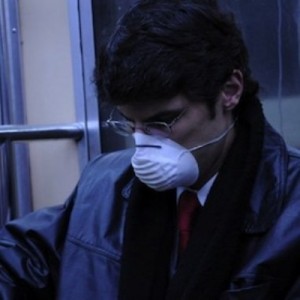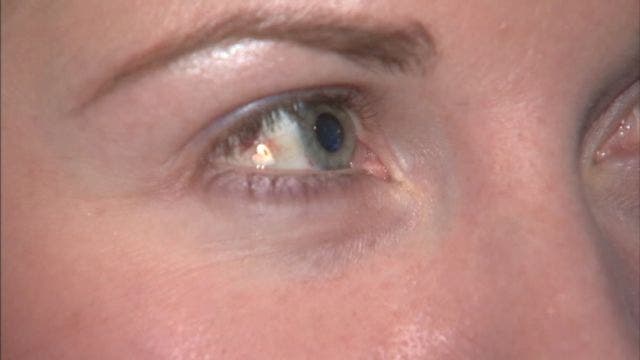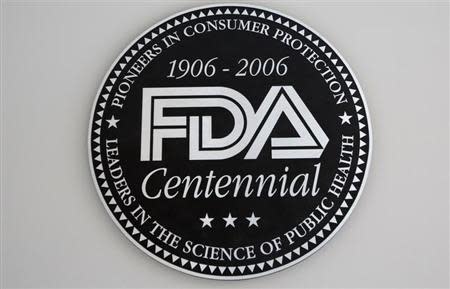
When Lindsay* was 11 years old, she started having the same dream every night. After she fell asleep, she would envision herself suffering from fainting spells, as various people stood around her and worried about her health.
Then, when she woke up, she would be embarrassed about how good the fantasies made her feel.
“I just thought over it a lot,” Lindsay told FoxNews.com. “…I’d get these dreams so often, and they were very pleasant.”
Her recurring dream eventually manifested into reality when Lindsay was 13 years old, after a strong allergic reaction caused her to repeatedly pass out. In order to determine the source of her fainting spells, Lindsay was admitted to the hospital, where she stayed for two weeks.
And the longer she stayed in the hospital, the more she didn’t want to leave.
“I loved it in the hospital,” she said. “I just loved it.”
Once she was released, Lindsay wanted so badly to find her way back to this new place she had enjoyed so much. So in spite of her good health, she started pretending to be sick with stomach pains, hoping this would allow her to return to that pleasant hospital setting.
Lindsay credits this experience with sparking the beginning of her long struggle with factitious disorder – more commonly referred to as Munchausen syndrome. Craving that good feeling she had experienced while staying in the hospital, Lindsay eventually began researching and faking illnesses that she knew would keep her hospitalized for as long as possible.
Over the course of her lifetime, Lindsay would go on to feign more than 12 physical and mental illnesses – including extreme disorders like schizophrenia, multiple sclerosis and even epilepsy.
A student of illness
Although Lindsay’s first bout with Munchausen began when she was 13, she didn’t start faking full-blown illnesses until she was a young adult.
Then, at 24 years old, Lindsay gave birth to her first child and was admitted to a psychiatric ward after doctors suspected she was developing severe postpartum depression.
While in the hospital, those good feelings from her childhood returned. The admission to the hospital gave her relief from the obligations of being a new parent – and she didn’t want that relief to end.
“I wanted to stay; I enjoyed it,” Lindsay said. “So I started faking the symptoms of other peoples’ illnesses… I didn’t really know what I was faking. I was just mimicking other patients, like their illusions and hallucinations.”
Lindsay became a student of all the patients around her, closely studying their movements and their behaviors. She would often spend one-on-one time with individuals in order to gain an accurate understanding of how their psychiatric illnesses manifested. Once, she spent an entire afternoon with a highly disturbed person with schizophrenia who talked using a word salad – a confusing mixture of random words and phrases. Lindsay would eventually mimic the behavior she learned from him to get diagnosed with schizophrenia herself.
Over the next three years, Lindsay was in and out of the psychiatric hospital nine different times, mostly for depression but also for the other mental illnesses she had adopted. Having had a taste of what it felt like to feign psychiatric disorders, she decided it was time to ramp up her performances – and start faking physical symptoms.
At first, Lindsay presented to different hospital emergency rooms with abdominal pains. However, she would become too scared to follow through with her charade and leave before she was admitted.
Then over time, she did more research on the disorders she wanted to mimic and became much more sophisticated at faking the different signs and symptoms. She eventually became so adept at acting out these diseases, she would go on to be diagnosed with epilepsy, multiple sclerosis, Guillain-Barre syndrome, stroke, insulinoma, appendicitis and status epilepticus.
Throughout this time, Lindsay knew what she was doing was wrong – but she felt like she couldn’t stop.
“A million different things were going through my head,” Lindsay said. “I felt terribly, terribly guilty, yet I would get the relief that I wanted – the attention, the feeling of control over my life that I didn’t have that I wanted.”
Over the next seven years, Lindsay would be admitted to 100 different hospitals.
Getting help
Though Lindsay found comfort in her Munchausen syndrome, the disorder wreaked havoc on both the personal and professional spheres of her life. She was never able to hold down a steady job, as she would miss too many days of work while staying in the hospital. And her repeated absences from her family inevitably took their toll: After eight years of marriage, her husband filed for divorce and gained full custody of their three children.
Additionally, Lindsay’s body was starting to wear out. Her veins had become grievously scarred due to numerous IV injections, and she developed radiation sickness from all of the X-rays she had undergone. Faking her various physical illnesses was becoming an extremely painful process.
Feeling utterly exhausted and alone, Lindsay decided it was time to get help for her problem. Eventually, she read a book by Dr. Marc Feldman – one of the nation’s leading experts in Munchausen syndrome. In his book Patient or Pretender, Feldman claimed that “curing” a patient with factitious disorder was incredibly difficult – and nearly impossible.
“The classic thinking about patients with Munchausen is they have always been described as hopeless cases, and the best thing the doctor can do is run in the other direction,” Feldman, who is based in Birmingham, Ala., told FoxNews.com. “Most don’t really entertain the idea of providing treatment. Recovery is considered so rare, it’s publishable in the medical literature and considered a medical anomaly worthy of attention.”
However, this way of thinking frustrated Lindsay, who was determined to get her life back on track. So she reached out to Feldman, and he invited her to come visit him in Alabama.
“She came to Birmingham and stayed for two and a half weeks, and we met every day,” Feldman said. “It was kind of a crash course; we’d meet over coffee or lunch and talk for an hour and a half each day, and I learned a lot from her – and we’ve remained friends ever since.”
After hearing more about Lindsay and her story, Feldman asked her if she felt comfortable speaking about her illness to other medical professionals. So the two met in Washington D.C., where Lindsay presented her tale to members of the American Psychiatric Association during their annual conference.
It marked one of the first times a Munchausen patient had spoken out about his or her disorder.
“I wanted to stand up there and say, ‘I do want help, and I have the capability to understand, so work with me,’” Lindsay said of her motivations. “’Don’t be afraid and don’t run away.’”
The road to recovery
Though Lindsay was never Feldman’s patient, he helped put her in touch with a number of psychiatrists and other individuals who could potentially help her. According to Feldman, Munchausen patients often have additional psychiatric disorders, such as depression or bipolar disorder, which go unnoticed – and by treating these underlying illnesses, individuals can then start to recover.
“Sometimes they get better with treatment,” Feldman said. “The fuel for the Munchausen tends to dissipate, and they find healthier ways to move on. Life changes occur, either through a spiritual element or social element, and they start to find that feigning illness gets in the way of the things the like to do.”
Eventually, Lindsay learned that she had an undiagnosed form of bipolar disorder, and she underwent three years of intensive psychotherapy to help alleviate her manic-depressive symptoms. And in turn, the treatment helped erase her Munchausen urges.
To help with her healing, Feldman also put Lindsay in touch with other Munchausen patients who were working towards recovery as well. Lindsay noted that this was extremely beneficial to her own recovery process, just as Alcoholics Anonymous can be very helpful for those suffering from alcoholism.
“It’s a daily struggle,” Lindsay said. “…I look at it in terms of how a drug addict would talk about their cure. It’s always there, and you have to work at it all the time. It’s more like addiction.”
After a more than 20 year battle with Munchausen syndrome, Lindsay says she is now in recovery, having not feigned any illnesses for the past two years. Thanks to her therapy, she was able to go back to school, procure a steady job, and reconnect with her children during their teenage years. More than anything, she hopes that her story will serve as an example to patients and therapist alike that Munchausen syndrome can be cured – and that there is hope for those who feel alienated.
“Don’t let shame get in the way of talking it out with somebody,” Lindsay said. “I was so ashamed of how ugly the thoughts were in the first place that I wouldn’t bring it up with anyone for years and years…I would tell people, not to feel ashamed of their own thoughts. Just talk about it with somebody.
Source: USA News






 Imaging studies on Wiens and two other full face transplants done at Brigham in 2011 show that a network of new blood vessels had formed just a year after the operations. A fourth full face transplant was performed at Brigham earlier this year.
Imaging studies on Wiens and two other full face transplants done at Brigham in 2011 show that a network of new blood vessels had formed just a year after the operations. A fourth full face transplant was performed at Brigham earlier this year.

 Hyderabad, Nov 26 (IANS) The American Academy of Ophthalmology (AAO) honored eminent ophthalmologist Gullapalli N. Rao with its outstanding humanitarian service award, said a statement here Tuesday.
Hyderabad, Nov 26 (IANS) The American Academy of Ophthalmology (AAO) honored eminent ophthalmologist Gullapalli N. Rao with its outstanding humanitarian service award, said a statement here Tuesday.



